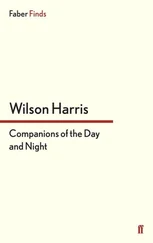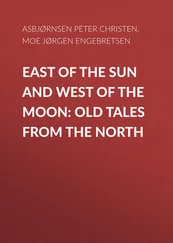In sum, Philo of Byblos is a peculiar hybrid; but if we must make comparisons, I would draw attention to the section of Diodorus Siculus’s first book which is usually taken to draw extensively on Hecataeus of Abdera’s On the Egyptians (Murray 1970). 6Diodorus’s account begins with an account of how life first arose in Egypt, and then continues with an account of the promotion to godhead of beneficent individuals; unlike Philo, he continues into the historical period with a long account of Egypt’s historical kings. He, too, repeatedly claims to be drawing on original native sources (priestly anagraphai ); he, too, is motivated by the desire to demonstrate the primacy and superiority of Egyptian culture over Greek, claiming, like Philo, that the Greeks added a layer of mystification and travesty to the original native myths (1.23.6–7, 1.23.8, 1.24.8). That Hecataeus was Diodorus’s main source has recently been challenged (Winiarczyk 2002: 69–71), and if the challenge is upheld, a new identity must be found for the voice who uses Greek methods to challenge the dominion of Greek culture. Nevertheless, it is a voice that bears reasonable comparison to Philo, and testifies to the currency in the late Hellenistic period of the broad cultural tradition to which he belongs.
The final item is a Syriac treatise from one of the many manuscripts procured by the British Museum from the Monastery of the Syrians in the Nitrian Desert (Wadi El Natrun) in the middle years of the nineteenth century. In the manuscript it is headed “An Oration of Meliton the Philosopher,” and it claims to have been delivered in person, viva voce , to “Antoninus Caesar.” Belonging among the many apologies, some addressed specifically to emperors, in which Christian authors set out to defend their faith in the second and third centuries CE, it is, in practice, not an exposition of Christian dogma, but an attack on pagan idolatry. It is of interest to us because of a short section in which the author cites a series of examples of idolatrous cults which supposedly originated in the worship of statues. Not only is Near Eastern material, from Phoenicia, Syria, Mesopotamia, and Persia, remarkably prominent in this section, but it is rich, detailed, and highly idiosyncratic. So it is of some importance, as a first step, to determine the author of the treatise and his context. This, alas, is easier said than done.
We do know of an Apology by the author to whom the treatise is inscribed, but the fragment which Eusebius cites from it does not overlap with anything in our text, which appears to be complete, and the first editor’s attempts to credit Meliton with a second Apology were unpersuasive (Cureton 1855: vi–xi). The original language of composition is still undetermined, but the sheer intimacy with which the author is able to speak of the cults of Edessa and Hierapolis, in particular, might speak for a Syriac rather than a Greek original, and even for a place of composition in either of those cities. If so, then the Greek-speaking Meliton is ruled out as author straightaway; other grounds for refusing him authorship are the lack of congruence with his thought and the challenging tone, which does not suit the eirenic and accommodating Bishop of Sardis. Dating criteria are, first, the possible referent of “Antoninus Caesar”; second, clues internal to the text, especially an apparent reference to the emperor wearing female dress, and another to plural “sons”; and third, common ground shared with other apologists, a more slippery criterion which is harder to apply (Harnack 1897: 522–524; Vermander 1972: 33–36). The candidates for an “Antoninus Caesar” with plural sons are Antoninus Pius (d. 161), with his adoptive sons Marcus Aurelius and Lucius Verus, and Marcus Aurelius with his sons Commodus and Annius Verus(d. 169, which would give a terminus ante quem if the reference to sons is secure). Some scholars, however, have looked further forwards, to Caracalla (211–217), who put an end to the Severan persecution of the Christians, and was present in the east, in Antioch, in 215; or to Elagabalus, in view of the reference to female dress; in that case the reference to sons would have to be prospective.
Like Philo, the author is a Euhemerist, though he is – at least notionally – adapting the doctrine in the spirit of the Christian polemicists who frequently used it (whether or not they knew of Euhemerus himself) to establish the mortality of pagan gods. They appealed to the classical notion of deified kings and benefactors, and to the argument that the gods were susceptible to biological processes, to pain, wounds, and death. They sought to explain how myths arose from events explicable in a rational way, and to show up the pagan gods as human beings who behaved in reprehensible ways; and frequently they sought to explain how idolatry (not just cult, but specifically pagan statuary) derived from the images of human beings. This is Ps.-Meliton’s point, too; he mentions images in his stories of Heracles, Nuh of Elam, and Nebo of Mabug, but statues may be inferred from parallel versions to underlie his stories of Joseph (who became the Egyptian Serapis) and Balthi (city goddess of Byblos) as well. He proceeds on the assumption that pagan gods were mortal men, about whom rationalized stories can be told; the mention of graves (of Tammuz) and, repeatedly, of kings (Dionysus; Zeus in Crete; Balthi in Cyprus; Cuthar in Phoenicia; the King of Elam; Hadad in Syria) echoes the apologists’ repeated charge that pagans worship their defunct rulers. Several stories show us gods behaving in sordid, undignified, compromising ways (Heracles and Zuradi; Athena and Hephaestus; Zeus and Alcmene; Balthi and her lovers), a frequent Christian complaint. Yet he is far from presenting a consistently hostile picture of the cults he describes, and, apart from Joseph the provider of food in Egypt, it is conspicuously the Near Eastern cults, especially of “Athi” (who healed the king of Syria), “Cuthbi” (who delivered the patrician of Edessa from his enemies), and Nebo and Hadran of Hierapolis (who cleansed their city of a malevolent spirit), which receive the most positive press.
The whole sequence of historiolae is, in itself, remarkable, for while series of exempla of pagan cults are, in themselves, commonplace in the apologists, they never offer a combination which is as wide-ranging, non-routine, and (especially in the case of Mabug) expansive as this. The range of reference bears a certain similarity to the accumulation of case-studies in Jacob of Sarug’s much later Homily on the Fall of the Idols (Martin 1875: 131–133), again both international and intensely local, but the eccentric Euhemerism and the narrative structures here are absent. The Mabug chapter is remarkable for another reason, for while it runs parallel to Lucian’s reports on the cultic semeion , “Apollo,” and the water-carrying festival in Hierapolis, it presents them from an entirely different perspective, with an alternative interpretatio graeca for Apollo (now Orpheus, presumably on account of the statue’s lyre) and an overall Zoroastrian coloration in which the gods are presented as wonder-working magi. We have yet another reminder of the multi-interpretability of Near Eastern cults – and yet another opportunity to ponder the question whether our élite, idiosyncratic, highly interpreted literary sources represent anything that was recognizable to any constituency of the participants in the cults they describe.
Lightfoot 2003 is the standard edition of Lucian’s De Dea Syria ; an English translation (replacing the unreadable Loeb) accompanies the Greek text, and the massive earlier bibliography on the text is accessible through the introduction and commentary. Within this bibliography, Elsner 2001 is illuminating on the literary strategies of the author, and it should be updated with Lightfoot 2005 and Kaizer 2016a. There is also a short annotated text and translation edited by Attridge and Oden 1976. Lightfoot 2007 is the most extensive treatment so far of Ps.-Meliton, with a follow-up in Lightfoot 2009, though it remains an under-studied text and needs attention from a Syriac specialist. Its first editor, W. Cureton (1855), equipped it with an English translation. The major commentaries on Philo of Byblos are by Baumgarten 1981 and Kaldellis and López Ruiz 2009 (both accompanied by English translation); other important contributions are Oden 1978, Attridge and Oden 1980, and Edwards 1991. Martin’s 1875 edition of Jacob of Sarug’s Homily on the Laws of the Countries is accompanied by a French translation, and there are commentaries by Landersdorfer 1914 and by Vandenhoff 1915.
Читать дальше












